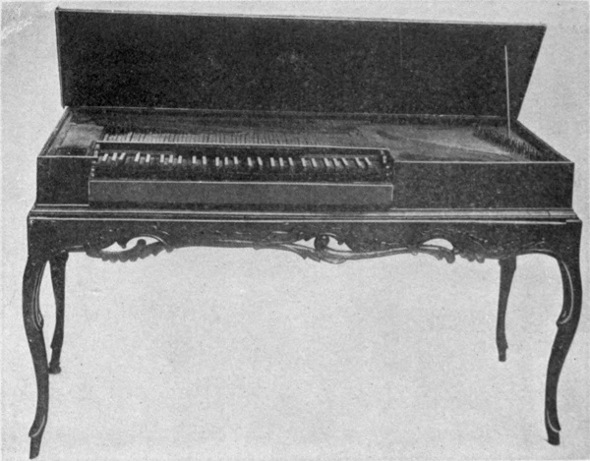THE INSTRUMENTS
 In the second half of the eighteenth century, the harpsichord, clavichord, and the Viennese fortepiano shared many characteristics, and well into the 1780s keyboard music was played interchangeably on all of them. Haydn’s earlier works were written for the harpsichord, the dominating keyboard performance instrument at the time. But they also lend themselves particularly well for execution on the expressive clavichord. If not for performance, Haydn most likely used the clavichord for practicing, teaching and composing. In general, fortepianos became widely available in the 1770s and 1780s, and at that time there was no clear-cut distinction between harpsichord and fortepiano music. In order to bring out the full expressive range and rhetorical content of Haydn’s music, on this recording the two dynamically most sensitive instruments, the clavichord and the fortepiano, have been used.
In the second half of the eighteenth century, the harpsichord, clavichord, and the Viennese fortepiano shared many characteristics, and well into the 1780s keyboard music was played interchangeably on all of them. Haydn’s earlier works were written for the harpsichord, the dominating keyboard performance instrument at the time. But they also lend themselves particularly well for execution on the expressive clavichord. If not for performance, Haydn most likely used the clavichord for practicing, teaching and composing. In general, fortepianos became widely available in the 1770s and 1780s, and at that time there was no clear-cut distinction between harpsichord and fortepiano music. In order to bring out the full expressive range and rhetorical content of Haydn’s music, on this recording the two dynamically most sensitive instruments, the clavichord and the fortepiano, have been used.Instruments used in the recording
The fortepiano used here was built in 2004 by Monika May, Marburg, Germany. It is a modified copy of a Viennese piano by Anton Walter, ca 1785, which is in the possession of the builder. Range: FF-g’’’. It has three knee levers, one for the moderator, one for raising the dampers completely, and one for raising the damper rail on the treble side, so that the upper register is undamped, the middle is successively more damped, and the bass is completely damped. This enables the player to vary the resonance in the instrument and support the upper register with more sustained sound even when the overall desired effect is one of clarity.
The Walter type instrument has a wide expressive range. It has great clarity, quick speech, and efficient damping suitable for the earlier sonatas. The touch is almost as sensitive as that on the clavichord. For the later classical and early romantic repertoire it provides a strong, full sound with great resonance; there are three strings per note above a’.
The clavichord used here is one of the manuals from a large two-manual and pedal harpsichord, built in 2001 by Joel Speerstra and Per-Anders Terning at the Göteborg Organ Art Center workshop for the Eastman School of Music. It is a copy of an instrument from 1766 built by Johan David Gerstenberg, located at the Museum of Musical Instruments at the University of Leipzig. Manual range: CC-e’’’.
(the above photograph features a clavichord)

No comments:
Post a Comment